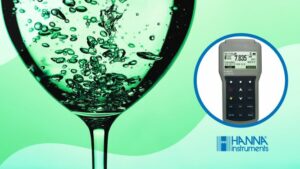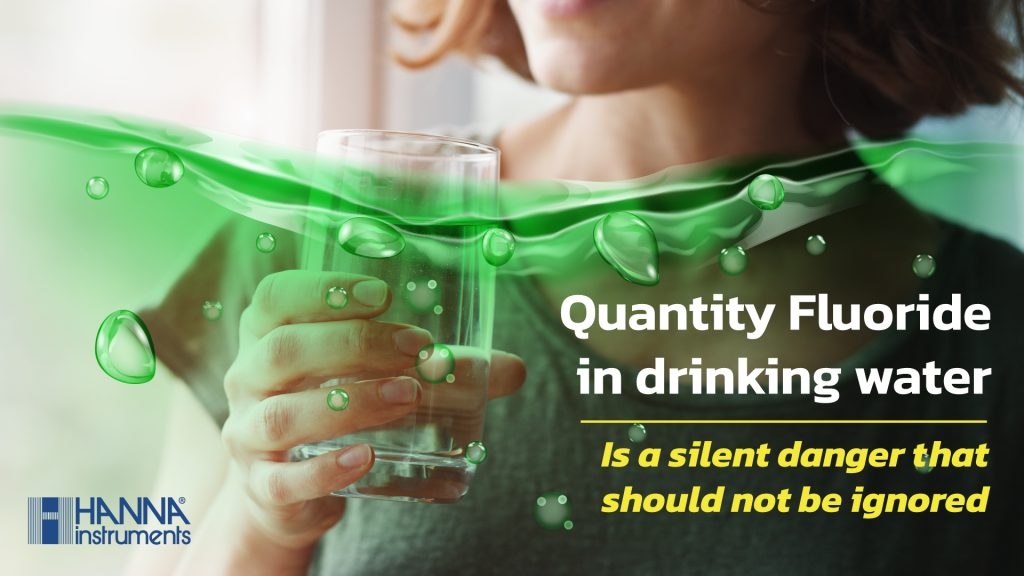No products in the cart.
Measuring Concentration Chemicals, Test Kit, เครื่องวัดค่าความขุ่นของน้ำ
Quantity Fluoride in drinking water | Is a silent danger that should not be ignored.
FluorideFluoride is the element fluorine’s salt. Found naturally in soil, water, air, mineral stones, and even some foods. particularly seafood and certain vegetables, as well as being produced for a variety of purposes People can obtain natural sources of energy in their daily lives by drinking water and eating food. Fluoride is nearly completely absorbed and builds up in the bones and teeth. which is used in dentistry to prevent tooth decay It is also commonly found in other health products such as toothpaste and mouthwash. to strengthen both bones and teeth.
Fluoride from food or “drinking water” is almost entirely absorbed in the gastrointestinal tract, with the kidneys excreting half of it. The remainder will be stored in the bones and teeth. Fluoride’s mechanism of action in preventing tooth decay is divided into three components: reducing mineral dissolution from teeth; strengthening teeth Reduce bacterial growth and acidification.
What happens if we get too much fluoride? The World Health Organization (WHO) has set a standard for drinking water with a fluoride content of no more than 1.5 mg/L in water because too much fluoride can cause freckles. Particularly in childhood, as well as other health issues affecting the nervous system and bones Learning ability is reduced, bones bend, and joint pain occurs. and may be severe enough to cause disability.
Standard values for quantity fluoride in drinking water
|
Agency |
Standards for fluoride in drinking water (mg/L) |
Reference |
|
World Health Organization, WHO |
< 1.5 | WHO (2011) |
|
Drinking water quality standards for consumption |
< 0.7 or a maximum
of not more than < 1.0 |
The government gazette 1978 |
| TIS 257-2549 Drinking water | < 0.7 or max < 1.0 |
The government gazette 2006 |
|
Tap water quality standards |
< 0.7 | Provincial Waterworks Authority 2007 |
|
Groundwater quality standards |
< 0.7 or max < 1.0 |
The government gazette 2009 |
| Drinking water in sealed containers | < 0.7 |
The government gazette 2010 |
| Drinkable tap water | < 0.7 |
Department of Health 2020 |
There for, we must limit fluoride levels in accordance with World Health Organization guidelines for good health. It also aids in the strengthening of bones and teeth. Fluoride content determination in various water samples A reliable and functional fluoride meter for drinking water is required. to avoid any potential health issues.
There are currently several technologies available to assist in determining the amount of fluoride in drinking water, such as analysis by Using a fluoride probe, determine the amount of fluoride ions in water (Ion Analyzer). The absorbance principle was used to analyze the data with a spectrophotometer. or chromatographic analysis, which is based on the principle of separating a mixture and determining the purity of the substance. Although fluoride can be quantified in a variety of ways, each method has limitations. It also plays an important role. As a result, it is critical to research or consult an expert before selecting a tool.
The company offers instruments for determining fluoride with a spectrophotometer and analyzing fluoride with a specific fluoride probe.

Hanna Instruments (Thailand)
Leading measurement instrument maker
WITH GREAT PRODUCTS, COME GREAT RESULTS.
Email Addresses
info@hannathaicom
CONTACT US
Line : @hannathailand
FB : HannaThailand
